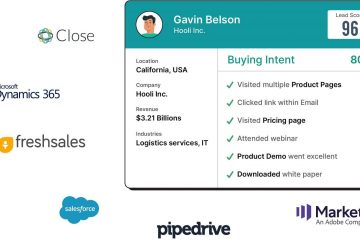5 Tips on Finding Reputable Sources to Cite in Your Blog Posts
Blog research is necessary, whether you’re writing a fact-based article or an opinion piece. However, your ability to back up your statements is essential, especially if your claims are reliant on data. At the same time, even a scholarly article can use bad science, so you must be careful.
How to Find Reputable Sources to Cite in Blog Posts
The best way to find any of the below resources is by searching Google and going straight to the source. Never quote from a secondary source, as it waters down your claims and evidence.
1. Use High-Quality Outlets and Publications
Link building is a fundamental part of search engine optimization (SEO), so if you’re going to link to another website, make sure it’s high-quality. SEO relies on Domain Authority (DA) to track the quality of each outlet. A website with a DA score of 40 or higher can be linked to without worry.
However, your blog should shoot for 60 or higher, but that isn’t always possible. Only industry outlets like Business Insider and Forbes tend to have DA scores that high. All websites have a DA score from 0-100, and you can check a website’s authority using a domain checker.
2. Take From Expert Opinions or Quote Them
To substantiate your ideas, ask an entrepreneur, leader, or anyone else with proven track record in your topic or industry. If you want to do this properly in any written style, use a citation maker. Be sure to link to the expert’s social media profiles, website, or phone number.
We recommend using HARO (Help A Reporter Out) to ask industry professionals for a quote. Don’t just use any quote you receive. Always research the expert by doing a quick Google search into the person’s background. Never quote another blogger unless they’re reputable.
3. Examine New Surveys and Recent Reports
A survey or report can provide insight via an extensive data set. For example, a marketing agency may ask other marketers how often they put ads on LinkedIn. The findings in these surveys and reports can provide valuable and accurate data that can be used in your blog.
Before you take a website’s findings as gospel, look at its participant size. Aim for a minimum participant size of 200 or 1,000 for scientific studies. Creating your own surveys and reports can be a great lead-generation strategy, as other readers will be linked back to your data.
4. Review Proprietary Data and Case Studies
Proprietary data and case studies are similar to surveys and reports, except they’re usually conducted by another company or with the help of another company. For example, a marketer may write up a case study from a previous campaign to prove their value to other clients.
While case studies are better utilized for your own portfolio (as long as your data was obtained through your own clients), proprietary data can still be useful for marketing purposes. For example, a marketer may prove link-building works by linking to another company’s case study.
5. Know How to Read Research Papers
This next section is long because it’s very, very important. A scholarly article alone won’t make your claims legitimate. You need to know how to read research before you can ethically use it.
Bad Science is Prevalent
Scholarly articles are considered the best and most reputable sources on the internet, and for a good reason. But have you ever read a study that contradicts the findings of another? Or, have you read an article that cherry-picked research to make their stance look more reputable?
Bad science is conducted by legitimate doctors and scientists all the time, usually because there’s a financial incentive to do so. Evidence against smoking was more than damning by the 1960s, but Big Tobacco did everything it could to prove the contrary through lousy science.
The Big Cholesterol Debate
The same problem is happening with cholesterol. 49% of studies funded by the egg industry did not accurately interpret their findings and suggest a positive or neutral relationship between egg consumption and blood cholesterol concentration compared with 13% of studies not funded.
But what about the other 51%? Cholesterol levels are often measured incorrectly to the researchers’ benefit. A person who already has high cholesterol won’t notice a significant change in their levels, which makes their findings less notable. People who eat dietary cholesterol after a prolonged cholesterol fast will see their cholesterol spike to dangerous levels.
It’s widely accepted that excess cholesterol leads to higher rates of heart disease, but a short study with minimal, typically non-healthy participants can make anyone believe the contrary.
How to Read Scholarly Sources
Since bad studies get published all the time, it’s up to you to find articles that don’t include bad science. Use the following check-list when reading a study to determine its legitimacy:
- Does the study use sensational or shocking titles to get clicks and likes?
- Is the study properly designed? Is it a randomized control trial (if so, that’s good)?
Was the study peer-reviewed? If it wasn’t peer-reviewed, it’s basically useless. - Is the study in a quality journal? Does this journal have a good reputation?
- Did the researcher pay to have it published? If so, don’t believe its findings.
- Did the researcher disclose any conflict of interest? If they did, does this company benefit from a positive spin? Did the researcher get paid to write this piece?
The impact bad science has on our community is incalculable, especially when they’re pushed by the media.

Conclusion
Proper research is instrumental to writing quality articles. The better your articles are, the more likely they are to reach and engage your readers. We hope that the above strategies can help you with proper citation. Let us know if you have any questions!
Sell more, understand your customers’ journey for free!
Sales and Marketing teams spend millions of dollars to bring visitors to your website. But do you track your customer’s journey? Do you know who buys and why?
Around 8% of your website traffic will sign up on your lead forms. What happens to the other 92% of your traffic? Can you identify your visiting accounts? Can you engage and retarget your qualified visitors even if they are not identified?




